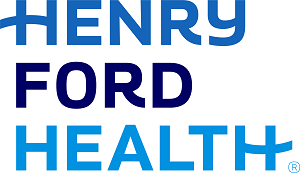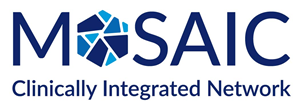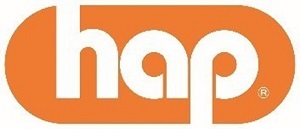Nurse Regains Hearing in Left Ear After 50 Years Thanks to Innovative Implant

DETROIT (December 23, 2020) – This holiday season, Angela Holland will enjoy the gift of hearing from her left ear again. After 50 years of single-sided deafness caused by a disease known as cholesteatoma, new hearing technology implanted by Henry Ford Health System surgeon Kristen Angster, M.D. will allow Holland to ring in the season and truly enjoy the sounds of the holidays.
Holland, a nurse with Health Alliance Plan, is the first Henry Ford patient to receive the new bone-conduction Cochlear Osia® 2 System implant introduced last year. Single-sided deafness is a common condition that affects about 60,000 people in the U.S. each year.
After surgery at Henry Ford Hospital on September 4 to implant the internal portion of the device under the skin, the new implant was activated by Henry Ford audiologist Chelsea Conrad, Au. D. who connected the device’s external sound processor and calibrated it to Holland’s optimal hearing level on October 13.
That’s when Holland’s ability to hear from her left ear was restored after 50 years of silence. Two days later, she stood at the wedding altar hearing the voice of her new husband John during their exchange of vows. “I remember specifically having him stand on my left side where I could hear him with my new implant. I cried when I heard John respond ‘Absolutely!’ when the marriage officiant asked if he would take me to be his wife,” said Holland.
Cholesteatoma, a noncancerous skin growth that can develop in the middle section of the ear and behind the eardrum. “I had surgery to remove the cholesteatoma when I was 12 years old and lost hearing in my left ear as a result,” said Holland.
“We are one of a number of systems across the country implanting this new technology which works by conducting the sounds through the bones of the skull,” said Dr. Angster, a neurotology surgeon with the Henry Ford Department of Otolaryngology. “This new bone-anchored hearing aid is more comfortable for patients and it’s innovative because it eliminates much of the feedback that exists with traditional bone conduction implants.”
“The system conducts sound through Angela’s inner ears and hearing nerves but skips the middle ear where she had problems hearing,” said Dr. Angster.
Living without the ability to hear from her left ear, Holland has spent her life adapting to everyday situations in order to hear what was happening around her. She would hold the phone to her right ear and made sure people stood on her right side when talking. Since her surgery 50 years ago, she continued periodic ear checks to monitor her condition.
While looking for a new ENT physician to get a checkup last year, Holland scheduled a hearing evaluation with Dr. Conrad through the Henry Ford Audiology Team, who asked her if she ever considered having her hearing corrected?
“This was the first time I ever heard that this was possible,” said Holland.
She was then referred to Dr. Angster to schedule a procedure to implant a bone anchored hearing aid (BAHA) to correct the conductive hearing loss in her left ear. But before that scheduled procedure, Dr. Angster contacted Holland informing her of the new osseointegrated implant technology available that offered a better hearing solution.
 Holland chose the new device, but delays caused by the COVID-19 pandemic and Dr. Angster’s maternity leave pushed Holland’s implant surgery to the Fall of 2020.
Holland chose the new device, but delays caused by the COVID-19 pandemic and Dr. Angster’s maternity leave pushed Holland’s implant surgery to the Fall of 2020.
The pandemic not only delayed the surgery, but also created new sound barriers for Holland. The social distancing and mask wearing efforts to stop the spread of the virus also created unexpected and unintended layers of isolation, “People’s voices were more muffled with a mask. You can’t see their mouth when they’re talking and read their lips, or they’re standing behind a pane of plexiglass,” said Holland.
So, after a 50-year wait what does it feel like to be able to hear clearly and profoundly from both ears again?
“There are so many noises that are out there now,” Holland said. “I could always hear and be able to talk to people and function but now it’s all these strange sounds that you don’t recognize and are loud and clear, all of the sudden.” Holland described the strange sounds as everyday sounds most people take for granted like traffic noise, closing of a car door or putting a car key in the ignition. All sounds that were previously muffled background noises, and that are now loud and clear.
Dr. Angster and her Henry Ford Cochlear Implants Team colleague Laura Brainard, M.D. have implanted the Osia device in four patients since it was approved by the FDA in December of last year.
“The big difference with the new device is that, while the driver is under the skin, it still provides the high output power and gain of previous technologies that were external, which translates into better hearing,” said Dr. Brainard. Clinical evidence shows significantly improved patient outcomes and increased average daily use.
The traditional BAHA device is located above the skin and uses a little pin that sticks out of the skin which is more susceptible to infections and minor complications that can be irritating to the patient, according to Dr. Brainard.
For Holland, the new implanted device has restored a world of sounds she hasn’t heard in 50 years. She hopes that others who suffer from single-sided deafness explore the new technology and how it can improve their lives, “I would definitely tell people to investigate it because you don’t really realize what you’re missing,” said Holland. “You get used to living without hearing and when you get it back, you realize how much you’ve been missing all along, including the sounds of the season!”
###
About Henry Ford Health System
Founded in 1915 by Henry Ford himself, Henry Ford Health System is a non-profit, integrated health system committed to improving people’s lives through excellence in the science and art of healthcare and healing. Henry Ford Health System includes six hospitals including Henry Ford Hospital in Detroit; Henry Ford Macomb Hospitals; Henry Ford Wyandotte Hospital; Henry Ford West Bloomfield Hospital; Henry Ford Allegiance in Jackson, MI; and Henry Ford Kingswood Hospital – an inpatient psychiatric hospital.
Henry Ford Health System also includes Henry Ford Medical Group: Henry Ford Physician Network; more than 250 outpatient facilities; Henry Ford Pharmacy; Henry Ford OptimEyes; and other healthcare services. Our not-for-profit health plan, Health Alliance Plan – HAP – provides health coverage for more than 540,000 people.
As one of the nation’s leading academic medical centers, Henry Ford Health System trains more than 3,000 medical students, residents, and fellows annually in more than 50 accredited programs, and has trained nearly 40% of the state’s physicians. Our dedication to education and research is supported by nearly $100 million in annual grants from the National Institutes of Health and other public and private foundations.
Henry Ford Health System employs more than 33,000 people, including more than 1,600 physicians, more than 6,600 nurses and 5,000 allied health professionals. For more information, go to henryford.com.
###
MEDIA CONTACT: Sal Giacona / sgiacon1@hfhs.org / 313.421.9108
.svg?iar=0&hash=F6049510E33E4E6D8196C26CCC0A64A4)

/hfh-logo-main--white.svg?iar=0&hash=ED491CBFADFB7670FAE94559C98D7798)







